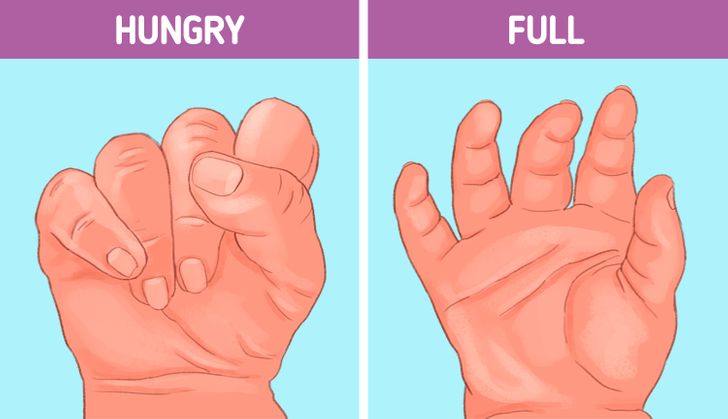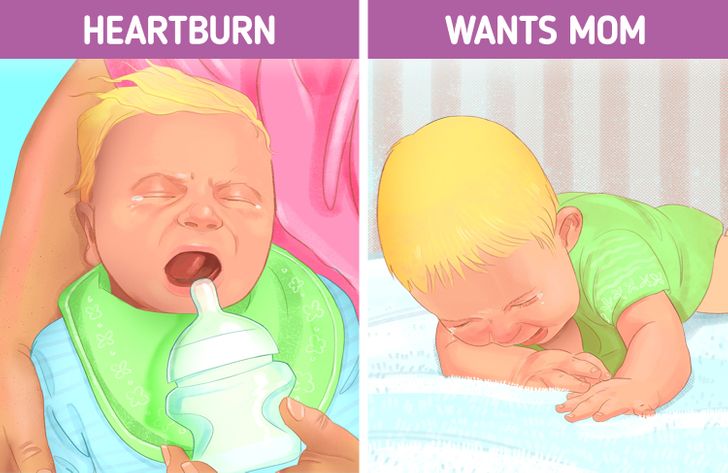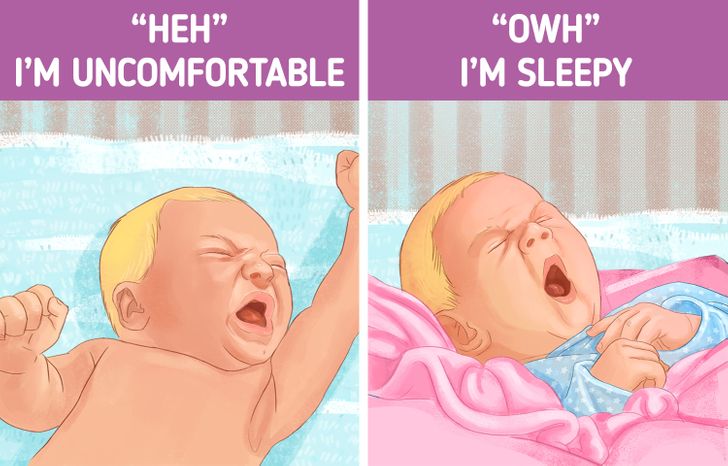How to Understand Your Baby Better
Taking care of a baby is a huge responsibility and we always try to do our best, even when we don’t understand exactly what the baby wants. To help you with this matter, 5-Minute Crafts has listed a few things that will help you understand your babies’ movements, the way they cry, and even their language.
1. Their movements

- Clenching their firsts — Babies tend to clench their body when they are hungry, so if you see a baby clenching their fists, you should probably feed them.
- Opening fists after eating — When babies are full, you will notice their hands start to open and become relaxed.
- Arching their back — When your baby has gas, an upset stomach, or reflux they may start to arch their back to try to feel more comfortable. You’ll notice that babies do this after feeding, when trying to poop, and even while lying down.
- Lifting their legs — Babies lift their legs when they are trying to pass gas. To help them with this, rub their stomach in a clockwise direction to encourage them to pass the gas.

- Hunger — When babies want to be fed, they make short, low-pitched cries that rise and fall. Offer your breast or bottle to stop the crying.
- Reflux — Babies may cry after feeding, and this could be sign of heartburn. To help with this problem, take breaks and burp your baby often during meals.
- Colic — 1 in 5 newborns suffer from this. When your baby cries for more than 3 hours a day, 3 times a week, it means they might have this condition. Offer them a pacifier, and rock and walk with them to see if it helps.
- Sleep habits — When your baby is 6 months old, they are able to sleep on their own. However, they might still want to sleep with you, so they start a crying session. Research shows that in this case, you should let your child cry out for some time as this helps them learn to go to sleep faster and stay asleep for longer.

All newborn babies make 5 reflex sounds:
- Neh: “I’m hungry” — This sound is made when the sucking reflex is triggered and the baby pushes their tongue up to the roof of the mouth.
- Owh: “I’m sleepy” — Babies do this when they are tired. The sound is similar to a yawn.
- Heh: “I’m uncomfortable” — This sound is a response to a skin reflex. Usually, the baby is too hot or too cold, or has a wet or dirty diaper.
- Eairh: “I have lower gas” — This sound is associated with gas and lower abdominal pain. When babies do this, you should place them on their stomach and rub their back. You can also gently massage their tummy.
- Eh: “I need to be burped” — When a big quantity of trapped air is caught in their chest, babies reproduce this sound. Burp them to help relieve this.
Note: This technique was created by Priscilla Dunstan. She is not a speech therapist or a scientific expert on babies. This is based on the skills she gained as a singer and vocalist that helped her carry out a research on babies around the world for 8 years. This language is still being researched but has shown a good accuracy rate already.
Share This Article